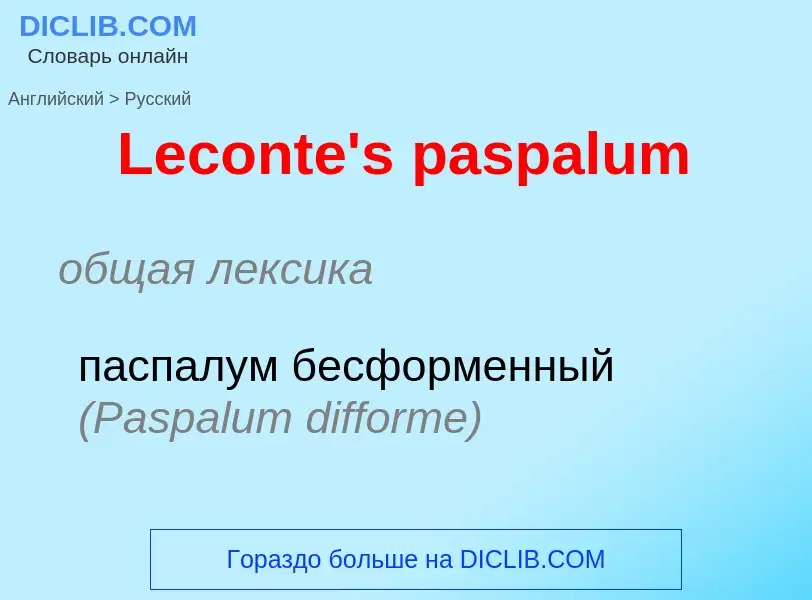Traduzione e analisi delle parole tramite l'intelligenza artificiale ChatGPT
In questa pagina puoi ottenere un'analisi dettagliata di una parola o frase, prodotta utilizzando la migliore tecnologia di intelligenza artificiale fino ad oggi:
- come viene usata la parola
- frequenza di utilizzo
- è usato più spesso nel discorso orale o scritto
- opzioni di traduzione delle parole
- esempi di utilizzo (varie frasi con traduzione)
- etimologia
Leconte's paspalum - traduzione in Inglese
общая лексика
паспалум бесформенный (Paspalum difforme)
общая лексика
паспалум гладкий (Paspalum laeve)
общая лексика
гречка заметная (Paspalum notatum)
Definizione
Wikipedia

Digitaria exilis, referred to as findi or fundi in areas of Africa, such as The Gambia, with English common names white fonio, fonio millet, and hungry rice or acha rice, is a grass species. It is the most important of a diverse group of wild and domesticated Digitaria species known as fonio that are harvested in the savannas of West Africa. The grains are very small. It has potential to improve nutrition, boost food security, foster rural development and support sustainable use of the land. Despite its valuable characteristics and widespread cultivation, fonio has generally received limited research and development attention, which is also why the species is sometimes referred to as an underutilized crop.
The name (borrowed by English from French) is from Wolof foño.
Fonio has continued to be important locally because it is both nutritious and one of the world's fastest growing cereals, reaching maturity in as little as six to eight weeks. It is a crop that can be relied on in semi-arid areas with poor soils, where rains are brief and unreliable. The grains are used in porridge and couscous, for bread, and for beer.
The small grains make it difficult and time-consuming to remove the husk. Traditional methods include pounding it in a mortar with sand (then separating the grains and sand) or "popping" it over a flame and then pounding it (which yields a toasted color grain; this technique is used among the Akposso). The invention of a simple fonio husking machine offers an easier mechanical way to dehusk.
The genetic diversity of Digitaria exilis varies from region to region in Africa. For example, not much genetic diversity was detected among the domesticated Digitaria exilis landraces from Mali. In contrast, large levels of genetic diversity were detected among the domesticated Digitaria exilis landraces of the Upper Niger River Basin of West Africa. The many different landraces of Digitaria exilis are affected differently by the various processing methods.
The European Commission with the EU Regulation L 323/1 of December 19, 2018 approved the commercialization in Europe of Fonio as Novel Food, upon the scientific dossier managed and submitted by “the applicant” Italian company Obà Food.




